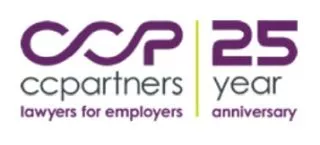Last week the government of Canada announced that it will offer a wage subsidy of up to 75% for qualifying businesses, backdated to March 15, 2020. You can read CCPartners' blog on that announcement here. This is a substantial increase from the 10% federal wage subsidy for small businesses introduced previously, and a welcome expansion to the previously announced subsidy only for small and medium businesses (undefined). However, many details remain unannounced
Here is what we know, and what we don't:
- Businesses who have seen a 30%
revenue decrease due to COVID-19 will be eligible for the subsidy;
- We don't know how the 30% revenue decrease will be calculated.Is it month over month?Is it compared to year to date 2019?
- Eligible businesses will be given a
temporary wage subsidy equal to 75% on the first $58,700 earned by
each worker.That equates to $847 per week, and the subsidy will be
back-dated to March 15, 2020.
- We do not know how the subsidy will apply.Will it be a credit to businesses, or an actual payment?
- Is there a cap on the subsidy per employer?
- The Prime Minister urged businesses
to "do the right thing" and top employees up the
remaining 25% if they can.
-
We do not know whether employer top-ups will reduce employees' EI benefits or CERB benefits, or whether there is any utility to registering a Supplemental Unemployment Benefit ("SUB") plan.Is this subsidy intended to be a "flow-through" of Employment Insurance-benefits, to employees regardless of whether they can perform any productive work for the employer – such as those workplaces not deemed "essential" and therefore ordered to close by the province?
-
- The Prime Minister gave a stark
warning that there would be serious consequences for employers who
"game the system".
- We do not know what those consequences may be, or how the government will oversee the subsidy program, or for that matter, how employers will apply the subsidy.
Once we know more about the subsidy, businesses who are essential workplaces, or whose employees can work remotely, may determine to have their employees keep working even despite reduced revenue. Manufacturers may choose to keep production going to build inventory. Groceries may keep workers in the store despite fewer customers. It certainly appears that employers have options.
More details with respect to the specifics of the federal wage subsidy were expected to be released on Monday. At the time of writing (Tuesday afternoon), no further details have been provided. As always, the team at CCPartners will continue to monitor the situation and update our readers through our COVID-19 blog series.
The content of this article is intended to provide a general guide to the subject matter. Specialist advice should be sought about your specific circumstances.

